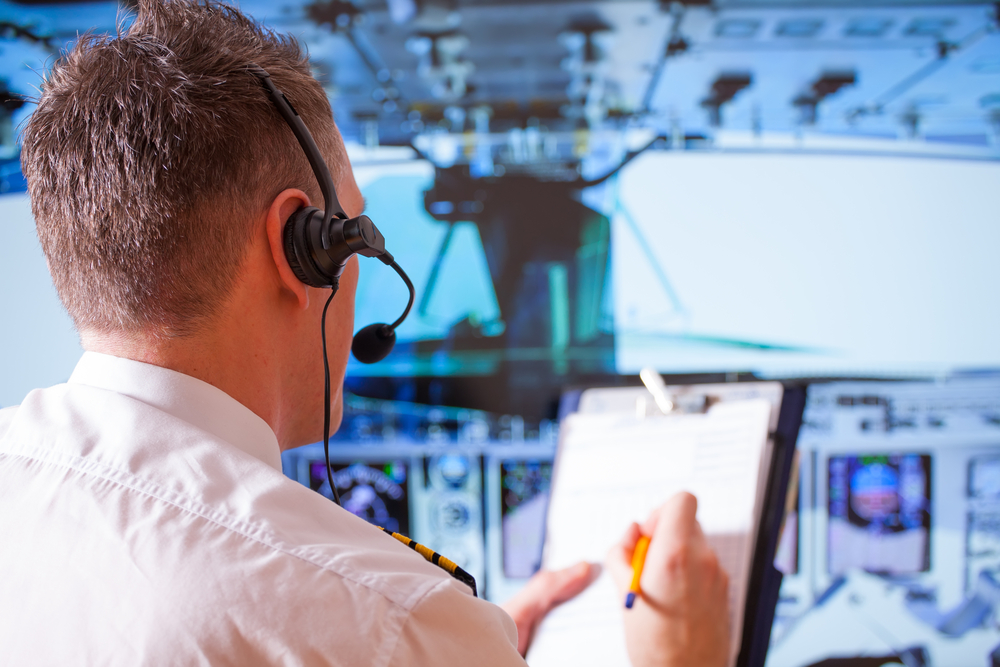Have you ever wondered what happens when communication breaks down in aviation? Pilots, air traffic controllers, and ground personnel rely on clear communication to ensure safety. When that fails, the results can be catastrophic, as we have seen in past incidents.
That is why ICAO set pilot language requirements and proficiency standards. But what exactly are these levels, and why do they matter? In this guide, we will explore the six ICAO pilot language proficiency levels. You will learn what each level means and how you can master the language of aviation for safer, smoother operations in the sky.
Table of Contents
Why are pilot language requirements needed?
Clear, precise communication between flight crews, air traffic controllers, and ground personnel is what keeps us safe in the skies. But what happens when that communication fails?
Well, we have seen how one small mistake can have devastating consequences. Remember the tragic runway collision at Haneda Airport in 2024? A Japan Airlines Airbus A350-900 collided with a Japan Coast Guard aircraft, all due to a simple communication error. The result? Multiple fatalities. And then, another heart-wrenching event in 2025 – a mid-air collision over Washington, D.C. What went wrong? Misidentification and a breakdown in communication between a Black Hawk helicopter and an American Airlines jet. This caused yet another catastrophic crash.
These heartbreaking incidents make one thing painfully clear: effective communication in aviation is not just important, it is a matter of life and death. When it fails, the consequences can be disastrous.
ICAO pilot language requirements
In 2003, the International Civil Aviation Organization (ICAO) made a significant move to improve aviation safety. It introduced standardized English language proficiency requirements to reduce accidents caused by communication misunderstandings. This initiative aimed to reduce accidents caused by communication misunderstandings. ICAO established six language proficiency levels. Let’s break down what each level means.
Level 1: Pre-Elementary
Level 1 is the lowest pilot language requirement set by ICAO. It is similar to A1 (Beginner) on the Common European Framework of Reference for Languages (CEFR). At this stage, pilots and air traffic controllers can only use basic English. They rely on simple phrases and isolated exchanges, which may not be enough in critical situations.
Pilots and controllers at Level 1 often struggle to understand or communicate important information clearly. They also find it hard to respond effectively in dynamic or emergency scenarios. ICAO requires a higher level of proficiency for operational duties. Pilots and ATCs at this level need to improve their skills.
Level 2: Elementary
Level 2 is a step up from Level 1, but is still basic On the ICAO scale, Level 2 (Elementary) is equivalent to A2 (Elementary) on the CEFR. So, what does that mean for pilots and air traffic controllers? Well, they can handle simple English in everyday situations, but their communication skills are still pretty limited.
At this stage, they can easily handle routine tasks, like asking for departure clearance or confirming a runway number. But what happens when things get tricky? Can they explain an unexpected delay or describe a technical problem with the aircraft? Not so easily. This is where things can start to break down, leading to confusion and misunderstandings.
Now, picture a high-pressure situation. A pilot needs to describe a technical fault fast, or an air traffic controller must give urgent instructions. What happens if language barriers slow them down or cause confusion? The result could be dangerous. That is why ICAO’s strict pilot language requirements are so important – aviation is all about clear, precise communication.
Level 3: Pre-Operational
Pilots and air traffic controllers at Level 3 can form basic sentences, but their speech feels slow and uncertain. They often pause, searching for the right words. Conversations sound unnatural, making back-and-forth exchanges frustrating.
Standard aviation phrases help, but real-world communication is not just about memorization. It requires quick thinking and clear expression – skills that Level 3 speakers struggle with. When things go according to plan, they can manage, but aviation does not always follow a script. Misunderstandings happen often, especially when something unexpected occurs. Technical issues make things even harder. Pilots need to describe problems clearly, but vague explanations can slow things down and create risks.
In high-pressure situations, weak communication becomes dangerous. Misunderstandings, confusing distress calls, or hesitation in a crisis can lead to serious consequences. In aviation, every word matters. Pilots and controllers must communicate with confidence and clarity. That is why ICAO sets Level 4 as the minimum for safe operations.
Level 4: Operational
Level 4 is the minimum pilot language requirement set by ICAO for international operations. It matches CEFR Level B2 (Upper Intermediate). At this level, pilots and controllers can communicate well in both everyday and unexpected situations. They use both aviation language and regular English to handle difficult situations in the air and on the ground.
At Level 4, a pilot can:
- Communicate easily in routine and unexpected situations.
- Understand and respond quickly to radio calls.
- Speak with a clear and easy-to-understand accent.
- Handle unexpected challenges without hesitation.
- Use both aviation phrases and general English effectively.
Pilots and controllers at this level speak confidently. For example, if a pilot faces a delay, they can quickly share the new arrival time. A controller, needing to change a plane’s route because of sudden weather, will give clear, fast instructions.
A key skill at this level is responding right away to radio calls. Picture a busy airport with planes landing. A controller clears a plane to land in crowded airspace, and the pilot must respond quickly. Any delay could cause confusion or problems.
Level 4 speakers also have a clear, easy-to-understand accent. This is important in noisy places like cockpits or control towers. If the accent is unclear, pilots or controllers might misunderstand urgent instructions. Clear speech helps avoid mistakes and keeps things safe.
Level 5: Extended
In the ICAO system, Level 5 (Extended) signifies advanced proficiency in aviation English. What makes Level 5 so special in the ICAO system? It means pilots and air traffic controllers have mastered aviation English. At this level, they communicate clearly, understand complex messages, and respond fast – even when things get stressful. Whether it is a routine task or an unexpected challenge, they handle it all like pros.
So, what does it take to reach Level 5? Here are the key features:
- Fluency and accuracy: Pilots speak confidently, form complex sentences, and make few mistakes.
- Understanding: They can follow detailed instructions, even in tricky situations, and respond without missing a beat.
- Pronunciation: Pilots’ accent is easy to understand, even if it is not perfect.
- Vocabulary: Pilots know tons of words and can talk about a wide range of topics clearly.
- Handling unexpected situations: Pilots stay calm and use the right aviation terms – and plain language – when needed.
Level 5 is often compared to CEFR Level C1 (Advanced). Why? Because pilots and controllers at this level are ready to face complex and high-pressure situations. Their strong skills make them effective in any aviation environment.
Level 6: Expert
Level 6 – the Expert level! At this level, communication is smooth, confident, and professional. It is the highest tier on the ICAO pilot language requirement scale, where pilots and air traffic controllers manage all communication tasks with ease.
Speakers at Level 6 talk just like native English speakers, effortlessly navigating complex messages, including idioms and cultural references. Their pronunciation is crystal clear, with little to no accent, making them easy to understand in any situation. They also have a wide vocabulary, allowing them to express ideas on a broad range of topics with ease. When things get tricky, pilots can handle unexpected situations and quickly clear up any misunderstandings. At Level 6, it is all about language mastery -speaking with precision, confidence, and complete ease.

Can non-native speakers reach Level 6?
You bet! With dedication and advanced training in aviation English, non-native speakers can definitely reach this level. Even native speakers must show mastery in all language aspects to make the cut.
How is ICAO Language Proficiency Assessed?
ICAO assesses pilot language proficiency based on six key skills:
- Pronunciation: Speaking clearly so others can easily understand you.
- Structure: Using grammar and forming sentences correctly.
- Vocabulary: Using the right words and phrases for aviation situations.
- Fluency: Speaking smoothly and coherently.
- Comprehension: Understanding both routine and unexpected communication.
- Interactions: Responding effectively in different operational situations.
To assess these skills, testers use practical exercises, such as:
- Listening to and interpreting ATC-pilot communications.
- Responding to simulated emergency situations.
- Engaging in conversations that test your aviation vocabulary and grammar.
How often do pilots need to test their language skills?
Pilots must test periodically to maintain their ICAO language proficiency certification, and the frequency of testing depends on the level they achieve:
- Level 4: Valid for 3 years.
- Level 5: Valid for 6 years.
- Level 6: Permanent (no re-testing required).
However, pilots who do not reach Level 6 must undergo reassessment at regular intervals to keep their certification and remain eligible to operate on international flights.

The ICAO pilot language proficiency levels are essential for safe and clear communication in aviation. Pilots and controllers who master these levels can handle any situation with confidence, ensuring smoother and safer skies.
Now that you are familiar with the pilot language requirements, do you still wonder if you have what it takes to become a great pilot? Take a look at these 10 signs that could mean you are meant to join the ranks of skilled pilots!

